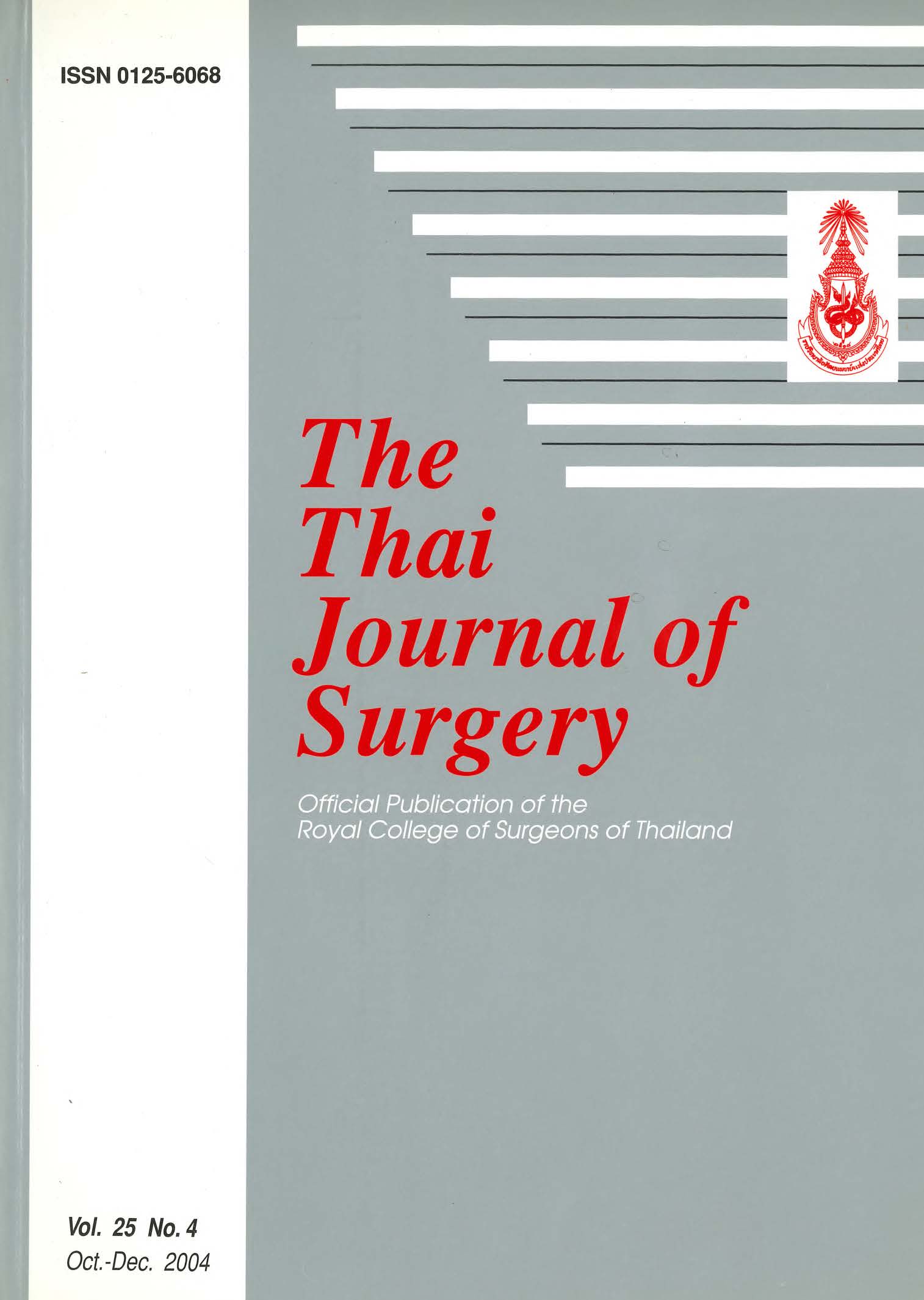Comparison of the Amount of Fluid Returned from the Diagnostic Peritoneal Lavage for the Diagnosis of Intra-abdominal Injury
Abstract
It is still controversial about the appropriate volume of returned DPL fluid. A study was carried out in 30 adult patients with blunt or penetrating abdominal injury who underwent DPI, with 1 litre of crystalloid lavage to compare RBC counts in different volume of returned DPL fluid. RBC counts of the lavage fluid collected at 200 ml, 400 ml, 600 ml and 800 ml were compared using paired T-test. Mean RBC count of the lavage fluid collected at 200 ml was 12,469.13 cells/ml, at 400 ml was 13,792.77 cells/ml, at 600 mI was 17,082.13 cells/ml and at 800 ml was 20,168.57 cells/ml. Mean RBC counts of the lavage fluid at 200 ml, 400 ml and 600 ml were statistically different from mean RBC count at 800 ml. The RBC count of returned DPL fluid regularly increases as more fluid was recovered. One of the 30 patients had negative DPL at 200 ml and 400 ml but positive with increased amount of returned fluid. Using Chi-square test, we found that the volume of effluent fluid was not statistically different for the interpretation of the lavage fluid. However, we recommend collecting DPL fluid at least 600 ml to avoid false negative results.
References
2. Wisner DH, Danto LA, Peritoneal lavage, computerized tomography, angiography, ultrasound and magnetic resonance Imaging. Abdominal Trauma. 2 ed. p. 32-42
3. Read RA, Moore EE, Moore FA, Burch J, Blunt and penetrating abdominal trauma, Maingot's Abdominal Operation 10th ed. 1997. p. 763-86.
4. Sweeney JF, Albrink MH, Bischof E, McAllister EW, Rosemurgy AS. Diagnostic peritoneal lavage: volume of lavage effluent needed for accurate determination of a negative lavage. Injury 1994; 25: 659-61.
5. Sullivan KR, Nelson MJ, Tandberg D. Incremental analysis of diagnostic peritoneal lavage fluid in adult abdominal trauma. Am J Emerg Med 1997; 1 5: 277-9.
6. Grigg MJ, Masterson JP. Experience with diagnostic peritoneal lavage in blunt abdominal trauma. Aust NZJ Surg 1983; 53: 13.
7. Drost TF, Rosemurgy AS, Kearney RE, et al. Diagnostic peritoneal lavage: limited indications due to evolving concepts in trauma care. Am Surg 1991; 57: 126.
8. McLellan BA, Hanna SS, Montoya DR. Analysis of peritoneal lavage parameters in blunt abdominal trauma. J Trauma 1985; 25: 393.
9. Sokya JM, Martin M, Sloan EP. Diagnostic peritoneal lavage: is and isolated WBC count ≤500/mm3 predictive of intra-abdominal injury requiring celiotomy in blunt trauma patients J Trauma 1990: 30: 874.
Downloads
Published
How to Cite
Issue
Section
License
Articles must be contributed solely to The Thai Journal of Surgery and when published become the property of the Royal College of Surgeons of Thailand. The Royal College of Surgeons of Thailand reserves copyright on all published materials and such materials may not be reproduced in any form without the written permission.



